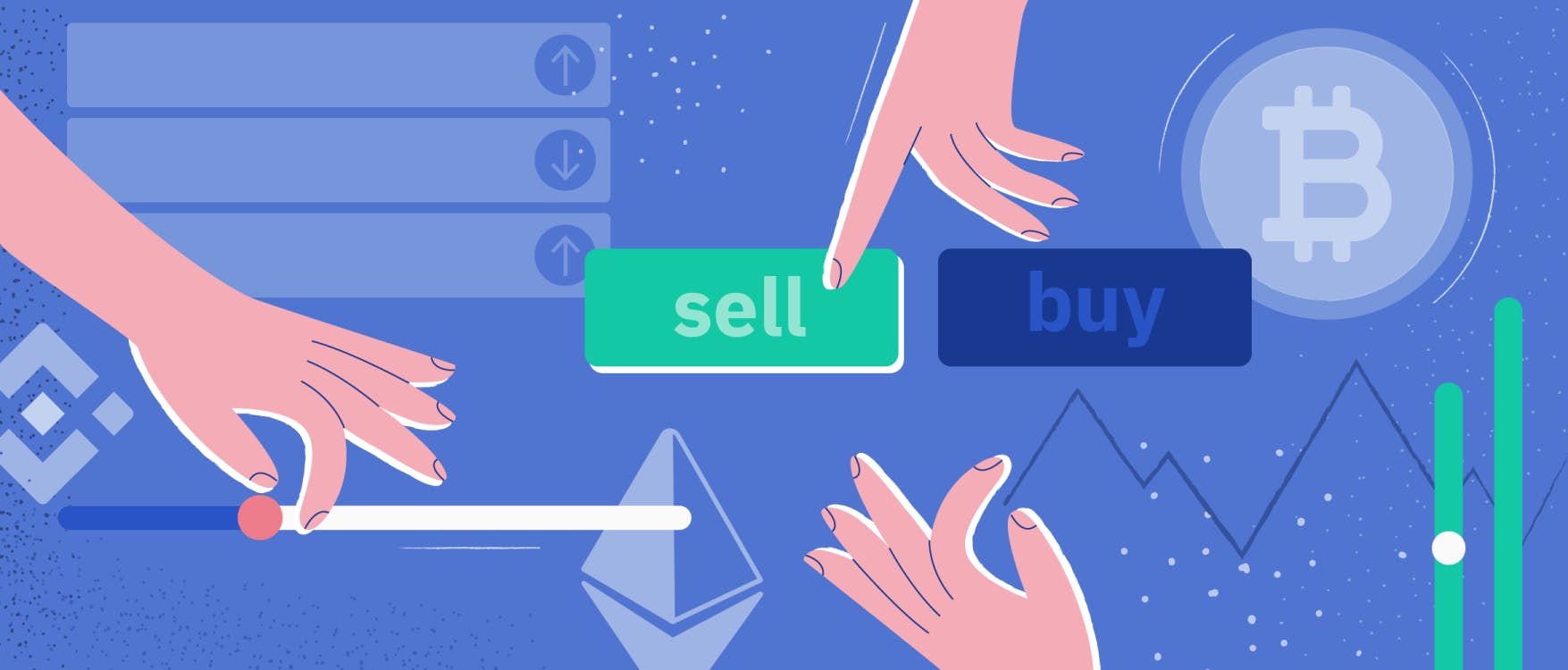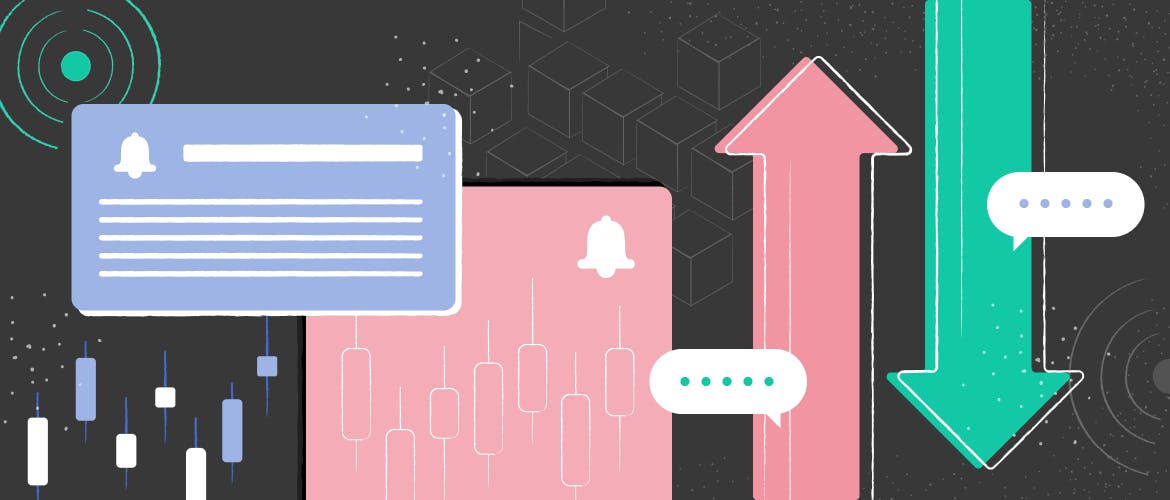
- All
- Tools
- Analytics
- Technical Analysis
- Trading
- Blockchain
- DeFi
- Guides
- Company News
- Educational
- Opinion
- Price Predictions
- Market News
- News
- Trading cases
- Practical guides
- Exchanges
- Trading signals
- Cryptocurrency
- Crypto bots
- Other
Become a crypto master
Learn everything about crypto,
trading and bots

Staying Ahead of Crypto Market: A Strategy to Trade Like a Pro
To the uninitiated, crypto trading can seem extremely difficult. However, this doesn’t have to be the case. In fact, trading cryptocurrency can be a profitable endeavor, once you master some popular strategies and learn to read trading signals. Here are some crypto trading essentials you need to know for maximizing earnings while mitigating risk.
Start Trading on 3Commas Today
Get full access to all 3Commas trading tools with free trial period

How to create your own crypto investment strategy?
Before you explore the market and figure out your individual approach, here’s a little spoiler: the perfect trading strategy does not exist. Every trader is different, and therefore, it’s up to the individual trader to decide what’s best for them. Choosing a cryptocurrency trading strategy should take into account several factors, including:
- Timeframes preferred (day or long-term trading)
- Level of risk
- Trader’s personality traits
Without further ado, let’s check out the most widely used trading strategies.
Start with the Dow Theory
If you’re making your first steps in crypto trading, the Dow Theory on stock price movement will help you understand the market. It was developed by William Peter Hamilton, Robert Rhea and E. George Schaefer, who analyzed 255 editorials in The Wall Street Journal written by Charles H. Dow, journalist and co-founder of Dow Jones and Company.
Being a form of technical analysis, the theory boils down to five simple facts:
- When an asset price is defined, the market considers every single detail. Therefore, its current price directly depends on the asset’s present state, its history, and its future.
- Any available information should be considered when making an investment. The best investors always explore the history of the assets they buy. This includes background information, price history, regulations, legislative issues, and so on. This information is to be used in an attempt to predict the impact they will have on the future price of the asset.
- Price is not a random metric: it follows short and long-term trends. Over time, the price can be changed by new or changing conditions and information.
- Market analysts keep their focus on asset cost. However, there are many other factors triggering price movements. Smart traders get a broader perspective of market conditions and react accordingly.
- History tends to repeat itself, so if you can take into account historical price movements of an asset based on investor sentiment, you can use that information to predict market movements in the future.
Technical analysis is a must
Technical analysis is another way to predict the movement of a currency pair. Technical analysis in crypto trading is essentially the same as in traditional stock trading: using charts and reading technical indicators to predict future price movements.
Technical analysis mostly relies on certain patterns within a market. Through these historical patterns, traders can predict future movements of an asset:
The Japanese candlestick chart is a great example of a technical analysis tool. Let’s take a closer look at it:
Candlestick charts
The candlestick, also known as the Japanese candlestick, is one of the most important tools in a trader’s arsenal. Candlesticks are a style of financial charting that helps display the price movement of any asset. Candlesticks display green and red lines across a timeframe to show price movements. Each candle shows the changes of the price over a certain period (traders can customize time frames).
The candles—or body of the candlestick—show the opening and closing prices, while their wicks display the lowest and highest price fluctuations during a given time period. The top of a green candle is its closing price and the bottom is the opening price, and vice versa for the red candle.
This tool allows you to see market turns and patterns. It covers different time frames, but works best for short-term and mid-term positions (from one minute to one day).
Time frames
Trading charts are used to analyze assets over particular periods known as time frames. They can be short (1 minute, 15 minutes, 1 hour) or long (day, month, year). Time is another piece of the trading puzzle to use in your attempt to predict the movement of a market because it allows you to develop a suitable strategy and react to market changes quickly.
As you can see in the screenshot below, time frames allow you to define an asset’s most likely price at a particular moment in the future.
Algo trading strategy
Algo trading is automated because all positions are opened and closed by trading bots. It is based on computer code and chart analysis, as well as intricate mathematical models and formulas. Special software processes data to calculate the most optimal trading positions, including enter and exit trades. It takes into account several parameters, such as price changes, volatility level, and so on.
An algo trading bot is software that automatically performs trades for a user. Many traders go for this option because bots can perform high-speed automated transactions. There’s no need to waste time constantly monitoring the market.
Some bots come with a free trial period or a demo version. If you haven’t tried this option yet, consider running a test: this way, you will see whether the bot is efficient and worth your investment.
Here are the most popular crypto trading bots compared:
Trading bot | Price | Exchanges | Features |
|---|---|---|---|
Pionex | Free | Binance, Huobi global, Pionex |
|
Trality | Free | Binance, Kraken, Bitpanda, Coinbase Pro |
|
3Commas | $14.50 | Binance, Bitfinex, Bittrex, Bybit, Bitstamp, Coinbase Pro, Gate.io, Cex.io, Exam, Huobi Global, KuCoin, HitBTC, Kraken, Poloniex, OKEx, YoBit |
|
TradeSanta | Free | HitBTC, Binance, Bitfinex, Bittrex, Huobi, OKEx, UPbit |
|
Shrimpy | Free | KuCoin, Binance, Bittrex, Coinbase Pro, Kraken, Poloniex, Gemini, Bitbox, BitMart, Huobi Global, HitBTC, OKEx, Bitstamp, Bitfinex |
|
Zignaly | Free | Binance, KuCoin, VCC Exchange |
|
ProfitTrailer | $36.46 | Poloniex, Bittrex, Binance, Kucoin, Huobi, Bybit |
|
NapBots | $8.51 | Binance, Kraken, Bitfinex, Bitstamp, OKEx, Bitpanda, Phemex |
|
Margin | $15/month | Binance, Kraken, Nash, Bitpanda Pro, Equos, Crypto.com, BTSE, Coinbase Pro, Bitfinex, Gemini, Poloniex, Bittrex, KuCoin, Latoken, Bitstamp, Bithumb Global, OKCoin, CEX.IO, Huobi, OKEx, HitBTC, Probit, Coinone |
|
Bitsgap | $19/month | Binance, OKEX, Bitfinex, HitBTC, Bittrex, Huobi, Exmo, Kucoin, CEX.IO, Kraken, Poloniex, Livecoin, Coinbene, Coinex, Gate.io, Bitstamp, Liquid, Gemini, Bit-Z, Yobit, DDEX, Bithump, Bibox, BigOne |
|
When in search of a trading bot, keep in mind three important aspects. Make sure that the senior leaders of the bot provider have a good track record. Discover the algorithms: are they open and available to anyone (if so, knowledgeable traders can determine whether it’s a worthy bot). Lastly, does the company provide any support and education? This is especially important for those who are using algo trading for the first time.
How to use crypto signals
Another way to stay ahead of the market is to use trading signals. These signals are generated by special platforms or channels that act as data providers. Signals are the product of market analysis, whether it be manual or automatic. Check out this trade signal marketplace guide if you want to delve deeper into the topic.
As a rule, well-established platforms partner with professional traders and allow users to subscribe to their channels. The price of a subscription depends on the number of signals sent and the traders’ ratings. The more accurate the predictions they give, the higher the cost of their analysis.
Final tip: Master a trading terminal
Once you have confidence in your market predictions, it’s important to be able to take quick trading action. By learning the ins and outs of a trading terminal, you can be prepared to place a trade when you see an opportunity present itself. Don’t let a trading terminal become a bottleneck on your way to successful trades: learn it in advance.
All trading terminals look and function in pretty much the same way. You can always start by using a terminal’s documentation or manual which should give you detailed information about its user interface and functionality. Alternatively, some terminals allow you to request a free demo version to test out the platform and make a few trades. This is particularly important when you master a new technique, whether it’s crypto futures trading or scalping.
FAQ
A trading strategy is a systematic approach to buying or selling assets. Each strategy is based on some sort of analysis: technical, historical, market trends, indicators, and so on. Hence, it is based on predefined rules and criteria.
Being driven by trading bots, algo trading is when software automatically creates enter and exit positions for trading. Its moves are based on technical market analysis and mathematical formulas.
Algo trading is used as an alternative or in conjunction with manual trading. It saves the user a lot of time by performing quick and efficient market analysis. Plus, bots are valued for their instant reactions to signals.
Predicting the market requires a complex approach. It’s important to perform technical analysis, track market trends, watch the asset’s market cap and price history, set timeframes correctly, and know how to manage your trading terminal.

A proven leader, successful at establishing operational excellence and building high-performance teams with a sharp focus on value creation and customer success.





